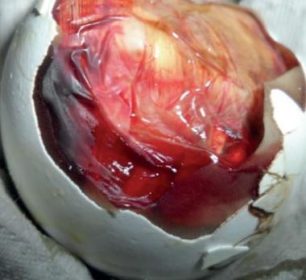
To read more content about AviNews-América Latina Sep 2015
To read more content about AviNews-América Latina Sep 2015
Contenido disponible en:
Español (Spanish)
Even though the birth rate of a batch is very good and the quality of birds is satisfactory, you may always find abnormal embryos in the trays. Sometimes, finding the cause of lower birth rate is difficult since its origin is not always localized in the hatchery.
We will now describe a series of problems relatively frequently found mainly affecting terminal phase embryos and newborn chicks.
This article makes reference to the second part of the article which was published in the previous edition.
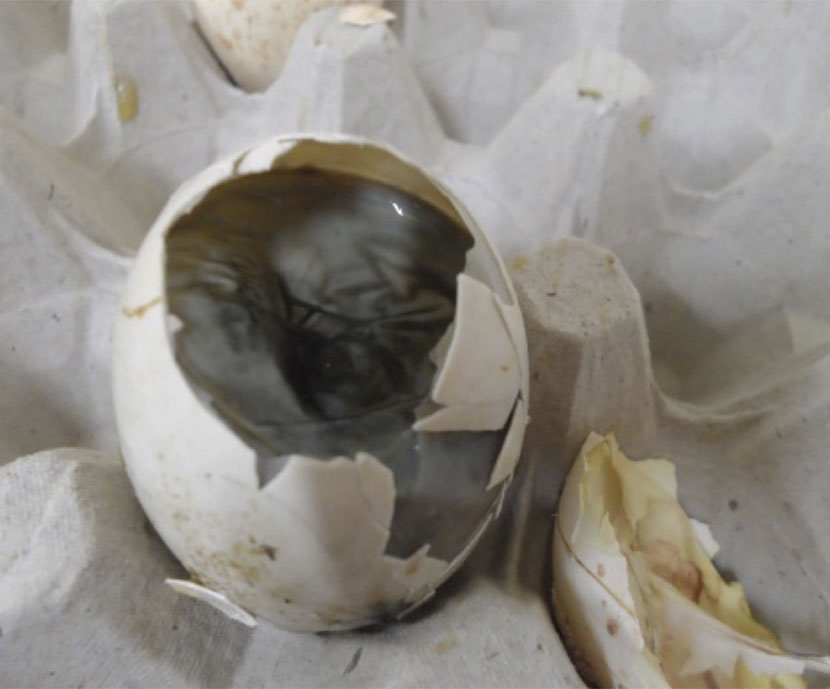
Corrective measures: Do not incubate dirty eggs, check number of collections and the state of cleanliness of nests
Possible cause: Improper disinfection
Corrective measures: Check disinfectant dosage and their replacement frequency
Possible cause: Contamination in hatchery
Possible cause: Eggs with sweat
Corrective measures: Keep eggs at adequate temperature during movement, avoiding temperature fluctuations
Possible cause: Contamination from broken eggs
Corrective measures: Prevent its appearance and verify removal of all organic matter before disinfecting

Corrective measures: Use paper or meshes
Possible cause: High temperature and lack of oxygen
Corrective measures: Check hatching temperatures since high temperatures may affect bone and cartilaginous development. It also generates lactic acid production because birds use muscle glycogen as energy source (Oviedo-Rondon and Wineland 20012). Calibrate thermometers
Possible cause: Stress during transportation
Corrective measures: Measure rectal temperature 39.8 – 40.5 ºC

Corrective measures: Check embryonic temperature, profiles, calibrate thermometers
Possible cause: Nutritional deficiencies -niacin-
Corrective measures: Check diets
Possible cause: Heredity
Possible cause: Alterations during development
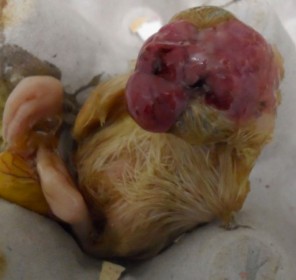
Corrective measures: Check temperature profiles and calibrate thermometers
Possible cause: Extremely low levels of oxygen during the first 3 hatching days
Corrective measures: Check ventilation profiles
INJURIES
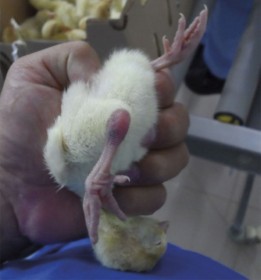
Possible cause: Hatcher temperature is too low
Corrective measures: Check embryo temperature, profiles and calibrate thermometers
Possible cause: Hatcher temperatures are too high
Corrective measures: Lower hatcher temperature
Possible cause: Vitamin deficiency
Corrective measures: Check diets
Possible cause: Very thick shell. Young batches
Corrective measures: Check profile humidity
SYMPTOMS

Possible cause: Bad handling at transfer
Corrective measures: Check times and movements during transfer
Possible cause: Nutritional deficiencies
Corrective measures: Check vitamin K and/or vitamin E levels
Possible cause: Contamination by molds and bacteria
Corrective measures: Make bacterial cultures
Possible cause: Temperatures are too high
Corrective measures: Check embryo temperature
Possible cause: Heredity
Exposed viscera
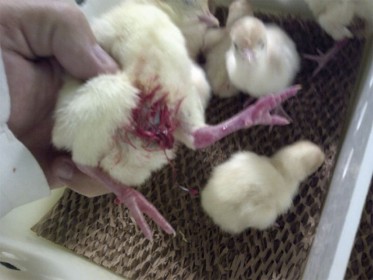
Possible cause: Hatcher temperature is too high
Corrective measures: Check profile temperature. Monitor embryonic temperature. Check and calibrate thermometers.
Possible cause: Heredity
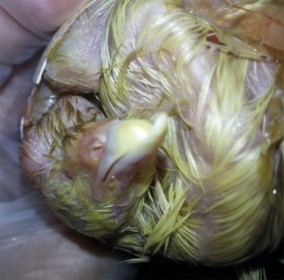
Corrective measures: Check embryo temperature. Verify thermometers calibration
Possible cause: Low oxygen level during the first week
Corrective measures: Check oxygen levels (Chan and Burggren 2005)
SYMPTOMS
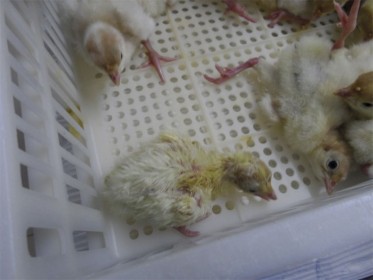
Corrective measures: Check hatcher profiles. Calibrate thermometers
Possible cause: Poor hatcher ventilation
Corrective measures: Check ventilation profiles
Possible cause: Excessive fumigation
Corrective measures: Check fumigation protocols.
Corrective measures: Do not hatch dirty eggs. Check egg handling in farms
SYMPTOMS
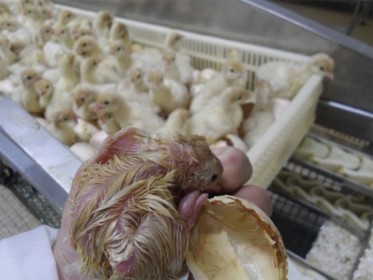
Corrective measures: Check embryo temperature and thermometer calibration
Possible cause: Incubation humidity
Corrective measures: Check weight loss at transfer and hatching
Possible cause: Improper turning
Corrective measures: Check angle (45°; Elibol and Brake 2006) frequency (at least 24 times, Wilson 1991). First week (Elibol and Brake 2004)
Possible cause: Improper ventilation or disinfection
Corrective measures: Check ventilation. Provide 100% fresh air and the correct temperature
Corrective measures: Old eggs
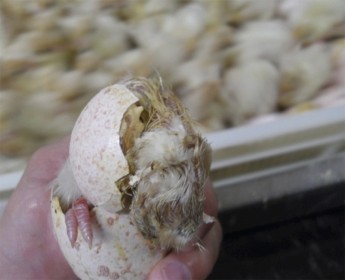
Corrective measures: Check moisture loss. Avoid over-ventilation
Possible cause: Improper turning
Corrective measures: Check turning angle and frequency
Possible cause: Cracked shell or poor shell quality.
Corrective measures: Frequently collect eggs, close nests overnight, check nutritional requirements and pathogen microorganism presence (e.g. bronchitis, Newcastle)
SYMPTOMS

Corrective measures: Check incubation profiles and times (Romanoff y Romanoff 1972)
Possible cause: Eggs stored too long
Corrective measures: Preheat and/or pre incubate (Fasenko et al. 2001)
Possible cause: Incubator temperature
Corrective measures: Check and/or calibrate thermometers. Measure embryo temperature (low)
Possible cause: Incubator humidity
Corrective measures: Check if incubator humidity is too high
SYMPTOMS
Possible cause: Improper transport or late feed and hydration. Improper temperature under brooders
Corrective measures: Monitor transport temperature and ventilation. Chicks must have access to feed and drink as soon as possible. Rectal temperature of chicks 39.8 – 40.5 ºC (Molenar 2012)
Possible cause: Microbial diseases or contamination
Corrective measures: Check vaccination and biosecurity protocols. Only incubate clean eggs (Mauldin 1999)
Possible cause: Poor state of health in hatchery
Corrective measures: Check disinfection protocols, roofs, conducts and difficult access places
Possible cause: Inadequate feeding, fungicide contamination or medication problems
Corrective measures: Check feed safety
Bibliography available on request